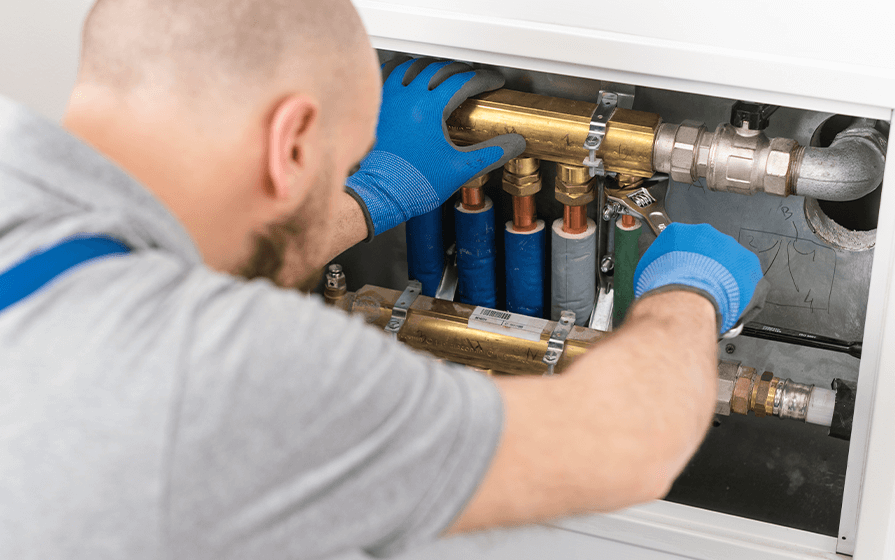If you’re here, you’re probably either curious, tackling a new DIY project, or simply looking to understand the world of rough-in plumbing. Whatever brought you here, I’ve got you covered. By the time you’re done reading, you’ll be a little closer to being a rough-in plumbing expert (without needing a degree or a wrench in hand). Let’s jump in and make this as fun and simple as possible.
What Is Rough-In Plumbing?
Imagine building a house. The walls aren’t up yet, there’s no fancy paint, and you can probably see right through the studs. That’s the perfect stage for something called rough-in plumbing. This is where the magic starts, laying the foundation for all the pipes and connections that make clean water come out of your faucet and used water disappear when you flush. Handy, right?
To put it simply, rough-in plumbing happens before anything gets closed up by walls. It’s the setup phase. Think of it like setting the stage before the play begins. You’ll install things like water supply lines, drain pipes, and vents, but you won’t see any sinks, toilets, or bathtubs yet. Those come later in the final plumbing stage.
Why Is Rough-In Plumbing Important?
Remember the last time your toilet wouldn’t flush or your kitchen sink clogged up? It’s rough-in plumbing that helps prevent plumbing tantrums like that. If you don’t get the pipes right during this stage, you’re setting yourself up for future headaches. Everything starts here, so getting it right is crucial. Another biggie? Inspectors only check your plumbing during the rough plumbing stage. If it doesn’t pass, you’ll need to redo it before moving forward. Yikes!
What Does Rough-In Plumbing Include?
Okay, here’s what happens during rough plumbing. Picture this step-by-step:
- Water Supply Lines Are Installed
These are the pipes that bring fresh water into your home. Whether you’re dreaming of crisp kitchen water or a steaming hot shower, it all starts here. - Drain and Waste Pipes Go Into Place
These pipes make sure that used water (and everything else you flush away) gets out of your home and into the sewer or septic system. - Vent Pipes Are Added
Fun fact: Without vent pipes, your plumbing would make weird glug-glug noises (and trust me, it’s as bad as it sounds). These pipes allow air to flow in and out so water can drain smoothly. - Classic Rough-In Diagrams Are Used
Professionals refer to visuals like a bathroom plumbing rough-in diagram or a kitchen sink plumbing rough-in diagram to ensure accuracy. Think of it as their treasure map to piping glory.
Diving Into the Heart of Rough-In Plumbing
Want to know a secret? Each part of your house has specific plumbing needs. For example:
Bathroom Plumbing Rough-In
Bathrooms are the champions of plumbing needs. They’ve got sinks, toilets, bathtubs, and showers all clumped together. This stage often starts with laying out something like a rough-in diagram of bathroom plumbing. Why? Well, you have to be super accurate here.
Here’s a quick look at bathroom-specific needs:
- Toilets need careful positioning because they’re connected to the main drain line. You might hear the pro lingo “rough plumbing toilet” or “toilet rough-in plumbing.” These refer to placing the drainpipe precisely where your toilet will sit later. A common reference? A classic toilet plumbing rough-in diagram.
- Bathtubs involve something called “bathtub drain rough-in plumbing diagram” or “bathtub plumbing rough-in.” Very visual terms, aren’t they? These diagrams guide pros to position pipes perfectly for your tub to drain without a hitch.
- Fancy vanities? You bet there’s “vanity plumbing rough-in” to handle sinks in style.
Kitchen Sink Plumbing Rough-In
Kitchens are less pipe-heavy than bathrooms. But they’re no less important! Installing the pipes for your sink, dishwasher, and water-filtration system (if you’ve got one) happens here. Builders often use a kitchen sink plumbing rough-in diagram or figure out the kitchen sink plumbing rough-in height to hit every accurate measurement. After all, your sink is where your tasty recipes meet clean water!
Laundry Room Plumbing Rough-In
Not many people think about laundry pipes until there’s a leak, and suddenly you’re ankle-deep in sudsy water. The laundry room plumbing rough-in dimensions are all about placing pipes at the best height and making sure the washing machine water has somewhere to go. Ever heard of washer rough plumbing? Well, now you have!
Basement Plumbing Rough-In
If you’ve got a basement, you might have noticed that pipes and drains tend to sit low. That’s because water flows downward (thanks to gravity for that). The basement plumbing rough-in ensures all underground pipes are routed correctly early on, leaving no room for error.
How Much Does Rough-In Plumbing Cost?
It’s no surprise that many of us worry about costs when it comes to construction. Rough-in plumbing cost per fixture can vary based on where you live and the size of your project. On average, expect to pay around $400–$800 per fixture. If you’re working on a slab foundation, be prepared for extra expenses since it involves more labor to set pipes in a concrete slab. Need something visual? Plumbers often use plumbing rough-in slab diagrams to know exactly where to dig before laying pipes.
Pro tip: Investing in residential plumbing bathroom plumbing rough-in diagrams ensures everything is laid out properly during this stage, saving you both money and trouble in the future.
Tools and Materials You’ll Need
While pros come armed with specialist gear, here’s a sneak peek at the must-haves:
- Pipes (PVC, PEX, or copper – depending on your preference)
- Fittings (tees, elbows, and traps)
- Pipe cutters and drills
- Plenty of patience (it’s a skill too).
And let’s not forget those trusty visual aids, like a bathtub rough-in plumbing diagram or a toilet plumbing rough-in diagram, to stay on track.
A Quick Word on DIY vs. Professional Help
Sure, there’s no feeling quite like saying, “I did it myself,” but tackling rough-in plumbing solo can feel like an uphill battle. Plumbing is tricky because if you get it wrong, you’re not dealing with a leaky faucet – you’re tackling potential flooding. If you’re confident and armed with guides like a plumbing rough-in guide, give small bits a shot! For the more complex stuff, call in the pros. Licensed plumbers know the ins and outs of toilet plumbing rough-ins, tub drain plumbing rough-ins, and everything in between.
Wrapping Things Up
And there you have it! The nuts and bolts (or pipes and fixtures?) of rough-in plumbing in one go. This stage may not be glamorous, but it’s arguably the foundation for every cozy bath, washing machine cycle, and delicious home-cooked meal. Remember, the key is preparation, accuracy, and perhaps a solid plumber if you’re not a DIY daredevil.
Got more questions about your bathroom or kitchen rough-ins? Stick around, and we’ll tackle the next section together!ns to ensure a safe and efficient plumbing system.

